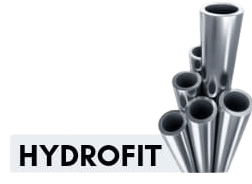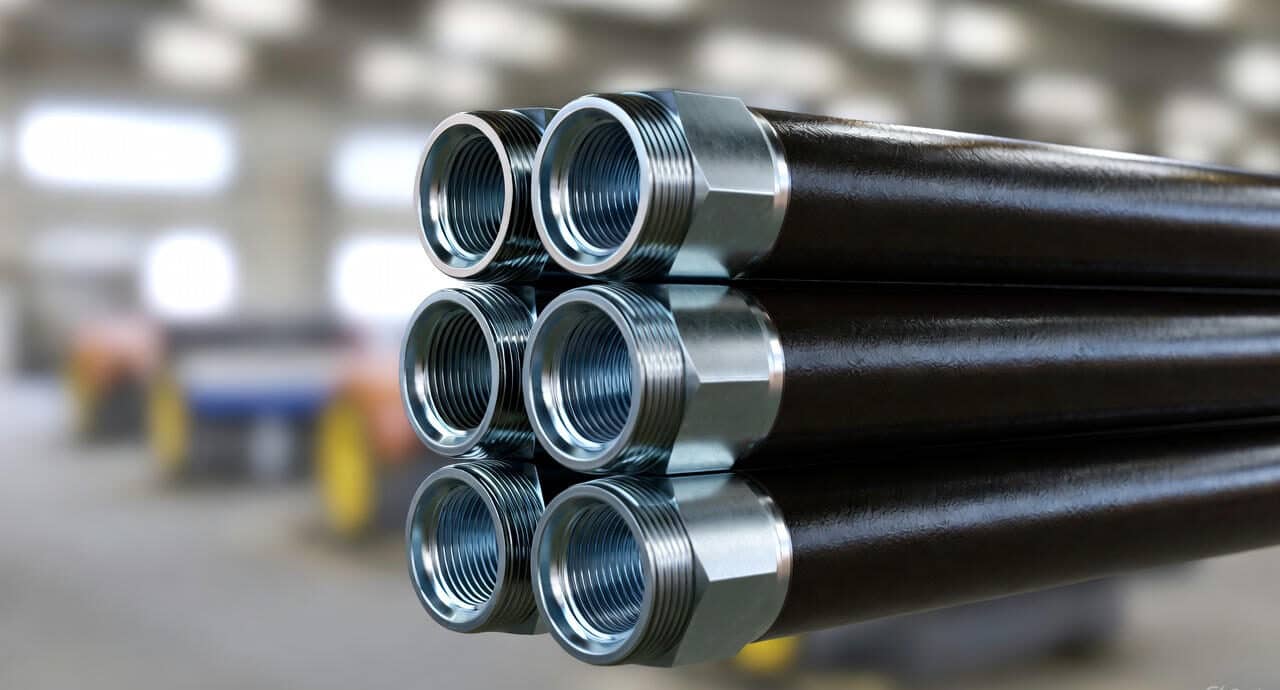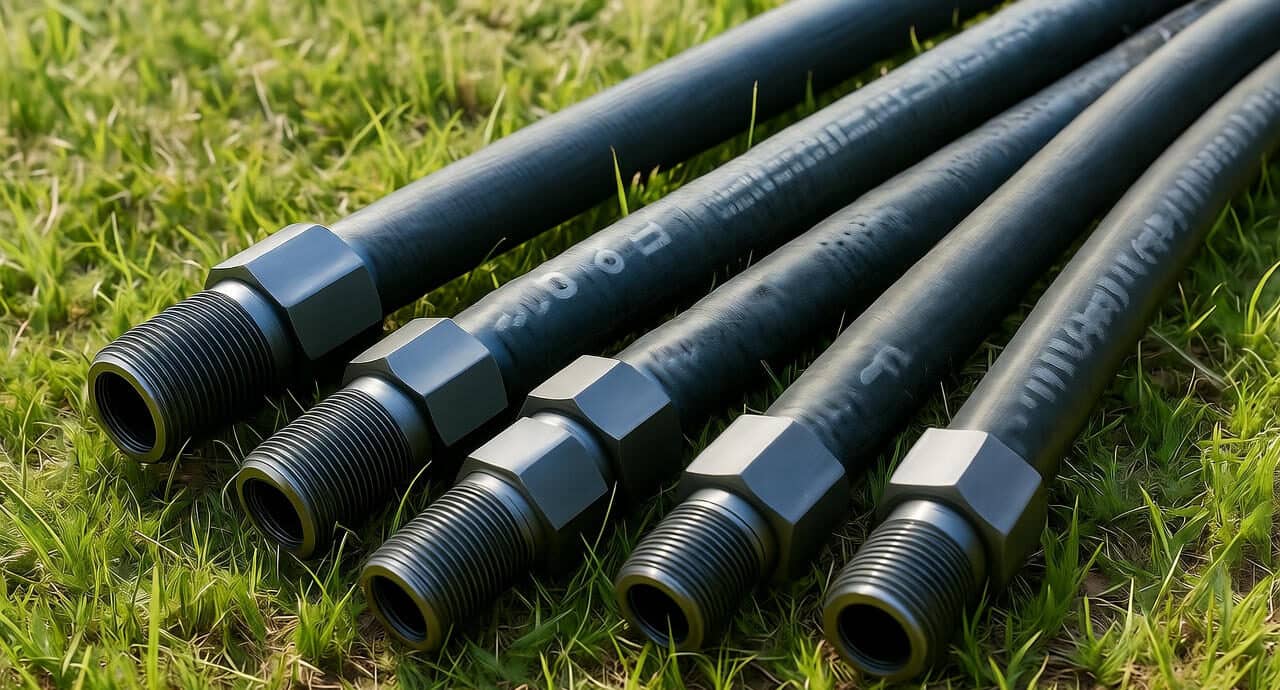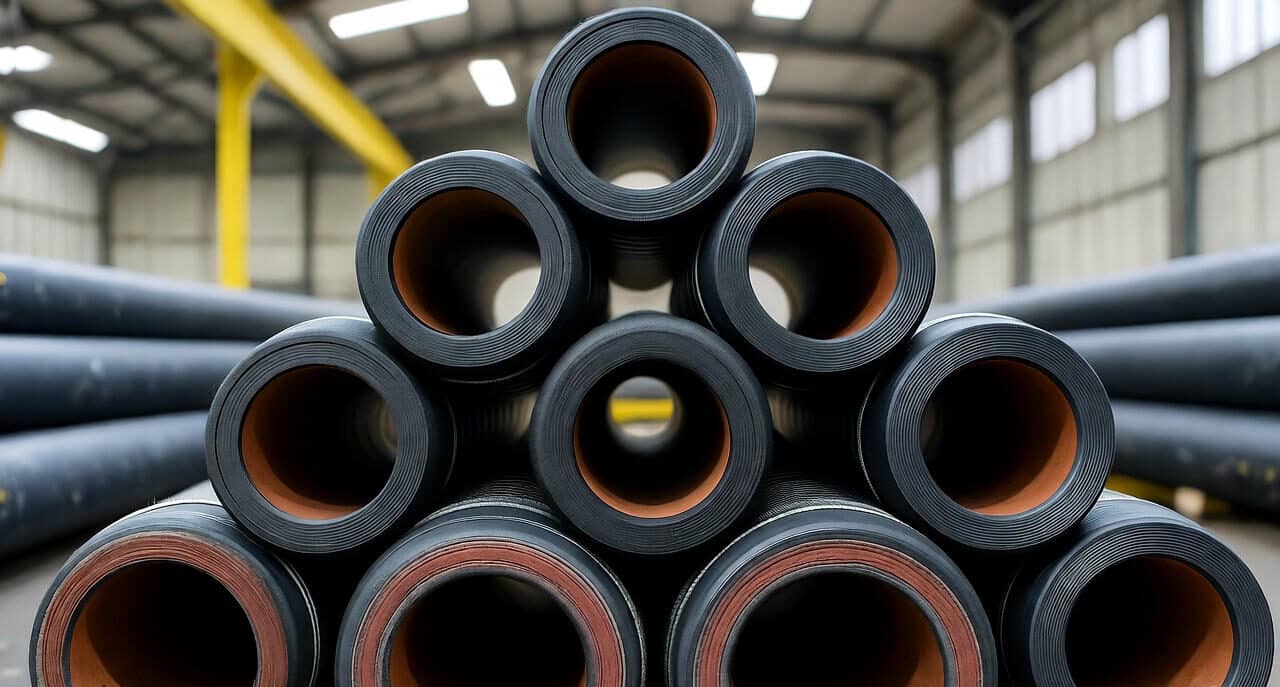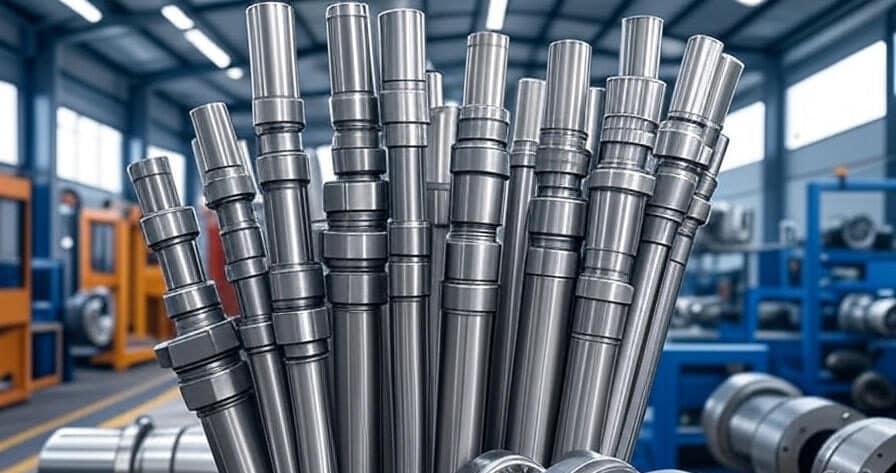+91-79045 61980 | Located in Chennai, TN
Hydraulic Hose Pipes- Complete Guide for Buyers
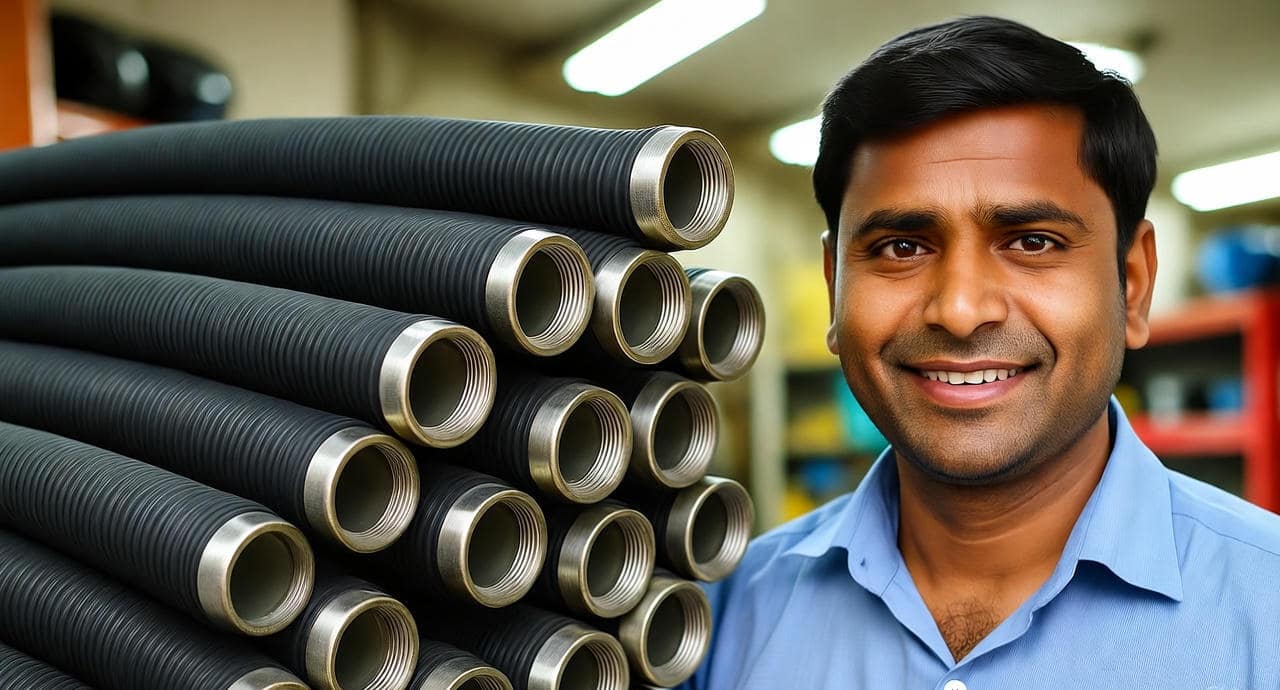
Have you ever thought how big machines lift heavy load or how hydraulic system works so smoothly?
The main reason behind this power is hydraulic hose pipes. These flexible pipes carry high-pressure oil or fluid inside the machine, helping every part to move and work properly.
In simple way, hydraulic hose pipes act like blood veins of a machine. They carry energy in form of fluid from one place to another. They can bend, twist, and take high pressure without leaking, that is why they are so important in every hydraulic system.
In this full guide, you will read about their construction, different types, manufacturing process, main features, and how to choose right hose for your system.
After reading, you will understand clearly why these hoses are called the lifeline of hydraulic equipment.
What is a Hydraulic Hose Pipe?
A hydraulic hose pipe is a flexible hollow pipe which is specially made for carrying pressurized oil or hydraulic fluid inside the system. It works like a connecting path between many important parts in a hydraulic setup.
- Main function: It connects pump, valve, cylinder and motor together, helping smooth flow of oil from one point to another.
- Built quality: The hose is made strong enough to handle high pressure, vibration, and temperature changes during work.
- Energy transfer: When the pump sends oil under pressure, the hose carries it safely to the actuator or cylinder. The pressure energy then converts into motion like lifting, pushing or pulling.
In hydraulic systems, hose pipe is very critical part. If it bursts or starts leaking, full system will stop working. So, it is always advised to choose proper and strong hydraulic hose pipe for better safety, performance and longer life of the machine.
Construction of Hydraulic Hose Pipes
The construction of hydraulic hose pipe is designed carefully so it can bear heavy pressure and harsh working environment. It is not a simple rubber pipe; it has many layers and each one does special function.
-
Inner Tube:
This layer carries the hydraulic fluid. It is made from synthetic rubber, thermoplastic, or PTFE, depending on what kind of oil or fluid is used. The inner tube must not react with the oil.
-
Reinforcement Layer:
This is the middle layer which gives real strength to the hose. It may have braided or spiral steel wire, or sometimes textile fiber. It helps the hose handle pressure without bursting.
-
Outer Cover:
The outer layer protects the hose from heat, abrasion, oil, or weather. It is made from strong rubber or similar material.
All three layers together make the hose flexible, tough, and long lasting in hydraulic systems.
Manufacturing Process of Hydraulic Hose Pipes
The manufacturing of hydraulic hose pipes is done in several careful steps so that the final product can handle high pressure and work for long time.
It starts with compounding, where raw materials like rubber or polymer are mixed with chemical additives. This mix gives flexibility, temperature resistance, and strength to the hose.
Then comes extrusion, where the inner tube is made by forcing rubber mix through a die. After that, reinforcement braiding or spiraling is done using high tensile steel wire or fabric yarn. This gives mechanical strength to the hose so it can work under high pressure.
Next process is vulcanization, where the hose is heated at fixed temperature and pressure. This joins all layers firmly and gives proper elasticity. After vulcanizing, the outer cover is added for protection from outside damage like oil, weather or heat.
Finally, the hose goes through testing and inspection. It is checked for leakage, burst pressure, and dimensions.
International standards like SAE, DIN, and ISO are followed strictly to maintain quality. The finished product is strong, flexible, and safe to use in heavy hydraulic systems.
Types of Hydraulic Hose Pipes
There are different types of hydraulic hose pipes, each made for special pressure or temperature condition.
- High-Pressure Hoses: Used in heavy machines, cranes, and presses. They have multiple steel wire layers for strength.
- Low-Pressure Hoses: Used for return lines and lubrication. They are lighter and more flexible.
- Braided Hoses: Have steel wire braids, used in medium-pressure applications. Easy to install and resist vibration.
- Spiral Hoses: Made with spiral steel wires, used for very high-pressure works like mining or drilling.
- Thermoplastic Hoses: Made from plastic materials, light in weight and chemical resistant.
- PTFE Hoses: Work under high temperature and handle corrosive fluid easily.
- Special-Purpose Hoses: Designed for special needs like marine use, fire resistance, or abrasion control.
Each type is selected depending on job requirement and working environment.
Here is a much simpler way to understand this:
| Type of Hydraulic Hose Pipe | Description / Use |
|---|---|
| High-Pressure Hoses | Used in heavy machines, cranes, and presses. Have multiple steel wire layers for extra strength. |
| Low-Pressure Hoses | Used for return lines and lubrication systems. Lighter and more flexible in design. |
| Braided Hoses | Contain steel wire braids, ideal for medium-pressure applications. Easy to install and resist vibration. |
| Spiral Hoses | Made with spiral steel wires, suitable for very high-pressure jobs like mining or drilling. |
| Thermoplastic Hoses | Constructed from thermoplastic material, lightweight and resistant to chemicals. |
| PTFE Hoses | Made from PTFE (Teflon), perform well under high temperature and carry corrosive fluids safely. |
| Special-Purpose Hoses | Designed for special conditions like marine, fire-resistant, or anti-abrasive environments. |
Hydraulic Hose Pipe Sizes and Standards
The size and standard of hydraulic hose pipe are very important. Even small mistake in size can create pressure drop or system damage.
The inner diameter (ID) decides how much oil can pass through, and outer diameter (OD) includes the wall and cover thickness. Hoses are marked with dash sizes which show the ID in sixteenths of an inch. For example, dash 8 means half-inch ID.
Manufacturers follow international standards like SAE, DIN, and ISO, which specify pressure, temperature, and testing methods.
Pressure rating tells the maximum pressure the hose can safely handle. High-pressure hoses can go above 6000 psi, while return lines work under low pressure. The temperature range depends on material and grades such as rubber hoses usually work from -40°C to +100°C, while PTFE or thermoplastic hoses can go higher.
By following correct size, pressure, and standard, you can make sure your hydraulic hose performs safely and lasts longer.
Applications of Hydraulic Hose Pipes
Hydraulic hose pipes are used in almost every industry where machines use power for working. They are very useful because they can carry high pressure oil safely and smoothly.
- In construction field, these hoses are fitted in cranes, loaders and excavators for lifting and moving heavy materials.
- In mining industry, they are used in drilling machines and rock-breaking tools which work under very high pressure.
- In agriculture, they are seen in tractors, harvesters and other farm equipment for hydraulic lifting and steering.
- In automobile sector, hydraulic hoses are used for brakes, clutch and power steering system.
- In power plants, they help in operating turbines, presses and other hydraulic units.
- In manufacturing industry, they are used in injection moulding, hydraulic presses and machine tools.
Because of their wide usage in different fields, hydraulic hose pipes have become an important and unavoidable part of all modern hydraulic systems.
Key Features and Properties
- Flexible: It can bend very easily without any crack or damage, which make it simple to install in tight space.
- High Pressure Handling: The hose can work safely even when pressure is very high during operation.
- Temperature Resistant: It performs properly in both hot and cold weather, keeping its strength same.
- Fluid Compatible: Suitable for many types of hydraulic oils and fluids, so no reaction or leakage happens.
- Durable: It is strong against wear, rust, and vibration, giving long service life in heavy working condition
Hydraulic Hose Fittings and Connections
Hydraulic hose fittings are small but very important parts which connect the hose with pump, valve or cylinder in the system. Without proper fittings, the oil cannot flow correctly.
There are many types of fittings used in hydraulic line:
- Crimped fittings are fixed permanently with special crimping machine.
- Reusable fittings can be opened and used again when needed.
- Adaptors are used for joining hoses having different thread or size.
- Quick couplers allow fast connecting and disconnecting without oil leakage.
These fittings are very necessary for making the system leak proof. If poor quality fitting is used, it can cause oil leakage or pressure drop suddenly. So, fittings must always be checked and matched properly with correct hose. When installed in right way, it keeps the system safe, strong and dependable for long time.
Advantages of Hydraulic Hose Pipes
- Flexible and easy to route in tight areas
- Prevents leakage with secure fittings
- Can take very high pressure
- Long lasting and corrosion resistant
- Works in all weather and temperature
- Light weight and easy to handle
- Reduces vibration and system noise
- Suitable for many industries
- Requires less maintenance
- Provides better safety under load
How to Choose the Right Hydraulic Hose Pipe
Choosing the right hydraulic hose pipe is important for machine safety and long life. Use the P.T.F.S.E principle — Pressure, Temperature, Fluid, Size, and Environment.
Check that the pressure rating matches your system. Confirm the hose can handle working temperature and fluid type. Select correct size for smooth flow and fitting connection. Finally, check where it will work — outdoor, indoor, or near chemicals or heat.
Choosing right hose saves repair cost and gives confidence that your machine will run properly every time.
Maintenance and Common Failures
Regular check of hoses helps in preventing accidents and breakdown. Look for cracks, bulges, and oil leaks before operation. Tighten fittings and keep them clean from dust and oil. Never twist or bend hose too much, it weakens the layers. Keep away from sharp corners to avoid wear. Replace damaged hose quickly to maintain safe and efficient system.
Hydraulic Hose vs Hydraulic Tube
Both hydraulic hose and hydraulic tube are used for carrying hydraulic oil, but both are not same. Their purpose may look similar, but their construction and working use are quite different from each other.
A hydraulic hose is a flexible pipe, mostly made from rubber, thermoplastic or sometimes PTFE material. Inside the hose, strong steel wire or textile braiding is given as reinforcement layer.
This helps the hose to take very high pressure without bursting. It can bend and move easily, so it is mostly used in mobile machines or equipment which vibrate or move during work, like cranes, excavators, tractors and loaders. Because of its flexible nature, hose can be fitted even in narrow or curved places where rigid pipe cannot be used.
On the other hand, a hydraulic tube is made from seamless steel or stainless steel. It is rigid, straight and very strong.
These tubes are used in fixed systems like power plants, industrial machines and factory units where movement is almost nil. Tubes can hold alignment properly and give high stability to the hydraulic system.
In short, hydraulic hose gives flexibility and easy fitting, while hydraulic tube gives strength and steady setup. Both are equally important in hydraulic system, depending upon the work and place of use.
Materials used in Hydraulic Hose Pipes Manufacturing
The material decides how hose will perform. Synthetic rubber is common for its flexibility and resistance to oil and heat. Thermoplastic hoses are light and suitable for mobile systems. PTFE hoses work with high temperature and chemical fluids. Metal hoses are used where heat and pressure are extreme. Hybrid hoses mix rubber and thermoplastic for better strength and flexibility. Each type is used based on application and environment.
Why Hydraulic Hose Pipes Are Essential in Modern Machinery
In today modern machines, hydraulic hose pipes are playing a very important part for transferring power through pressurized oil. These hoses carry hydraulic fluid from the pump to motor or cylinder, which helps the machine to do many types of movement like lifting, pushing, pulling or rotation. Without the hose, the machine cannot perform properly because the power will not reach from one component to another in correct way.
The hydraulic hose works like a main connecting line between different parts of the hydraulic system. It allows smooth and steady flow of oil under pressure, which gives better stability and control to the machine.
Because of flexible nature, the hose can be easily fixed even in small or curved area where steel pipe cannot go. At same time, it is strong enough to handle high pressure without bursting or oil leakage.
In many industries such as construction, mining, agriculture, automobile and manufacturing, big machines like excavators, cranes, forklifts and hydraulic presses all depend on these hoses for power supply and control.
The design of hydraulic hose also helps in reducing vibration and noise, which makes working safer and more efficient. That is why, in every modern hydraulic machine, hydraulic hose pipe is called as lifeline for smooth, flexible and reliable performance.
Why Buy Hydraulic Hose Pipes from Us
We supply complete range of hydraulic hose pipes and fittings that follow global quality standards. Our hoses are made for high pressure and tough conditions. With ready stock in Chennai, we deliver quickly to reduce downtime. Every hose is tested and certified for durability and leak-proof working. We offer different sizes and types for all industries. Our fast service and reliable products make us trusted partner for hydraulic buyers in India.
Summary
Hydraulic hose pipes are lifeline of any hydraulic system. They carry fluid power safely and efficiently. Knowing their construction, types, and standards helps you choose correct hose for your equipment. Using good quality hose reduces maintenance, prevents leaks, and increases productivity.
If you need certified and tested hydraulic hoses with fast delivery, contact us today. We provide strong, durable, and reliable hoses that ensure smooth and safe working of your hydraulic systems.
